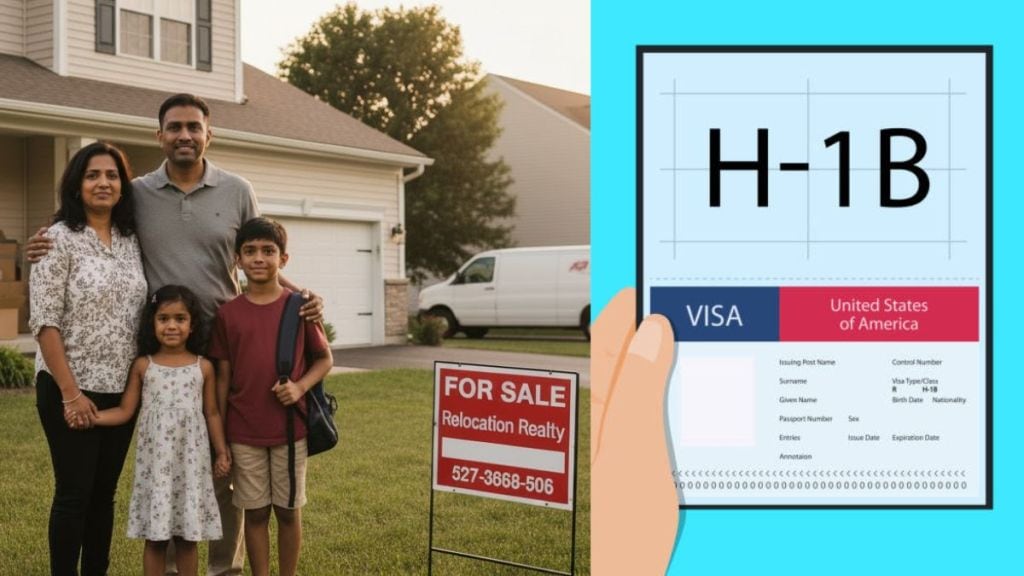Until recently, thousands of non-permanent residents, individuals living and working legally in the United States on visas like the H-1B, counted on the Federal Housing Administration (FHA) to access the dream of owning a home.
That path, once difficult but doable, has now all but disappeared.
As per the recent executive order from the Trump administration, the number of FHA-backed mortgages granted to non-permanent residents has dropped to near zero.
The decline follows a policy announcement made in a March 26 letter by the Department of Housing and Urban Development (HUD), stating that as of May 25, non-permanent residents, including those on employment-based H-1B visas, would no longer be eligible for FHA-insured loans.
The move, HUD wrote, is “in line with President Donald Trump’s commitment to safeguarding economic opportunities for US citizens and lawful permanent residents,” adding that “federal benefits, including access to FHA-insured mortgages, are reserved for individuals who hold lawful permanent resident status.”
The effects were swift and severe. According to a new report by John Burns Research & Consulting, NPRs made up less than 1 per cent of FHA loan volume in June, down from over 6 per cent just two months earlier in April.
By July and August, the number had effectively hit zero, the lowest since JBREC began tracking this data in 2018.
Impact of recent proclamation on H-1B visa holders
“New FHA mortgages to NPRs have dropped to near-zero following a rule change in May,” wrote JBREC expert Alex Thomas on X. “NPRs made up 4 per cent of FHA loan volume nationally in 2024; more in some markets, especially in Florida.”
Last week, @JBREC clients got access to a new piece from me and @EricFinnigan on how recent policy changes are reshaping the housing market for non-permanent residents (NPRs).
— Alex Thomas (@housing_alex) October 14, 2025
One notable finding: new FHA mortgages to NPRs have dropped to near-zero following a rule change in… pic.twitter.com/f5Zcvm0uwl
Now unable to access FHA-insured financing, NPRs must turn to conventional mortgage options, loans that are not backed by the federal government and come with stricter requirements, including strong credit scores, US-based income, and documented employment history.
Many non-permanent residents, despite being legally employed and contributing to the economy, struggle to meet those thresholds.
“The number of FHA loans going to non-permanent residents has dropped mostly because they’re just not buying anymore,” Thomas noted.
The exclusion is proving especially burdensome for younger and first-time homebuyers, and in regions where NPRs made up a significant share of the market, like parts of Florida, the ripple effects are growing.
Eric Finnigan, another JBREC analyst, warned on X that the policy is squeezing “entry-level homebuying in some key housing markets already dealing with weak sales & too much supply.”
FHA banned lending to H-1B visa holders and other non-permanent residents in May.
— Eric Finnigan (@EricFinnigan) October 14, 2025
This squeezes entry-level homebuying in some key housing markets already dealing with weak sales & too much supply.
(Of the 10 local markets most affected, 6 of them are in 2 states) https://t.co/fx4ErFD7Ep
At the same time, the Trump administration’s immigration crackdown is intensifying on multiple fronts.
A recent presidential proclamation introduced a one-time, $100,000 application fee for H-1B visa holders, further straining the attractiveness of the US as a destination for global talent.
Critics say this approach threatens not only immigrant workers but also the American businesses that rely on them.
“The executive order stifles a legal immigration program on which many American businesses depend, with effects that benefit Americans and the US economy,” said Jennie Murray, President and CEO of the National Immigration Forum, in a statement to Newsweek.
The housing policy change is only the latest blow. H-1B visa holders are already tightly restricted: they may only work for the specific employer listed on their visa.
No side gigs. No second jobs. No real estate income. For those on F-1 student visas, the limitations are even stricter, no employment beyond narrowly defined academic-related work.

